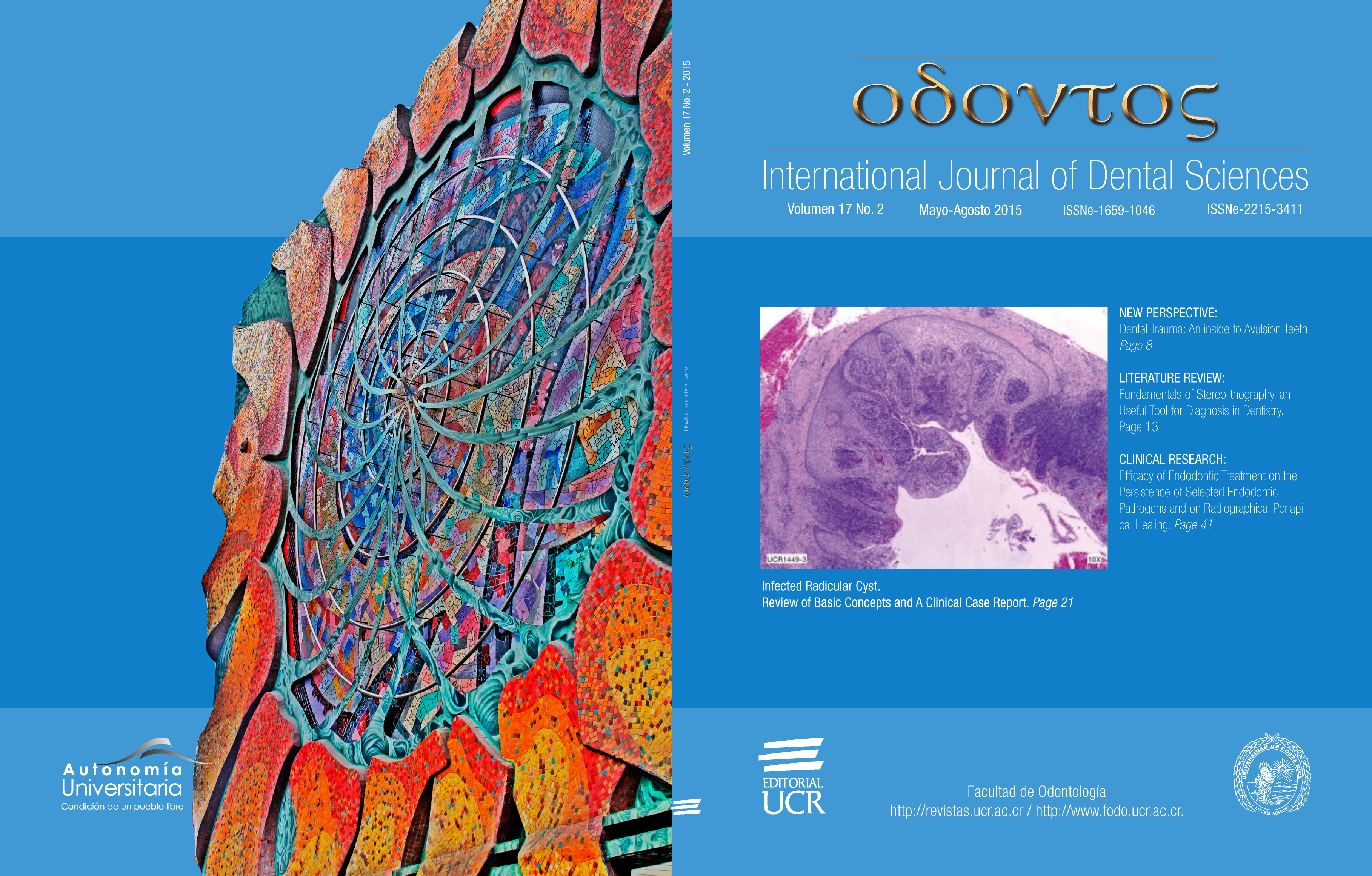Abstract
Advancements in digital technology and imaging over the last 25 years have permitted the implementation of three-dimensional (3D) modeling protocols in Dentistry. The use of stereolithographic models has progressively replaced traditional milled models and x-rays in the management of craniofacial anomalies and in implant rehabilitation. Diverse advantages can be mentioned, including better visualization of complex anatomical structures and more precise and sophisticated pre-surgical planning, through a simulated insight of the procedures of interest. The aim of this review is to provide essential information about the different applications and limitations of stereolithography, addressed to those general dentists and dental students interested in gaining experience in the reconstructive surgery and implant placement fields.
References
Ayoub, A.F., Rehab, M., O’Neil, B., Chambray, X., Ju, X., Barbenel, J., & Naudi, K. (2014). A novel approach for planning orthognathic surgery: the integration of dental casts into three-dimensional printed mandibular models. InternationalJournal of Oral and Maxillofacial Surgery, 43: 454-459.
Balshi, S.F., Wolfinger, G.J., & Balshi, T.J. (2006). Surgical planning and prosthesis construction using computed tomography, CAD/CAM technology, and the Internet for immediate loading of dental implants. Journal of Esthetic and Restorative Dentistry, 18: 312-325.
Bártolo, P.J., & Gibson, I. History of stereolithographic processes. In: Stereolithography Materials, Processes and Applications. Bártolo PJ, Editor. Amsterdam, The Netherlands: Springer; 2011. pp. 42-49.
Casseta, M., Giansanti, M., Di Mambro, A., Calasso, S., & Barbato, E. (2013). Accuracy of two stereolithographic surgical templates: a Islas et al: Stereolithography, an Useful Tool for Diagnosis in Dentistry retrospective study. Clinical ImplantDentistry and Related Research, 15: 448-459.
Chia, H.N., & Wu, B.M. (2015). Recent advances in 3D printing of biomaterials. Journal of Biological Engineering, 9: 4-17.
Cohen, A., Laviv, A., Berman, P., Nashef, R., & Abu-Tair, J. (2009). Mandibular reconstruction using stereolithographic 3-dimensional printing modeling technology. Oral Surgery Oral Medicine Oral Pathology Oral Radiology, and Endodontology, 108: 661-666.
D’haese, J., Van De Velde, T., Komiyama, A., Hultin, M., & De Bruyn, H. (2012). Accuracy and complications using computer-designed stereolithographic surgical guides for oral rehabilitation by means of dental implants: a review of the literature. Clinical Implant Dentistry and Related Research, 14:321-335.
Dandekeri, S.S., Sowmya, M.K., & Bhandary, S. (2013). Stereolithographic surgical template:a review. Journal of Clinical and Diagnostic Research, 7: 2093-2095.
Ersoy, A.E., Turkyilmaz, I., Ozan, O., & McGlumphy, E.A. (2008). Reliability of implant placement with stereolithographic surgical guides generated from computed tomography: clinical data from 94 implants. Journal Periodontology, 79: 1339-1345.
Farley, N.E., Kennedy, K., McGlumphy, E.A., & Clelland, N. (2013). Split-mouth comparison of the accuracy of computer-generated and conventional surgical guides. The International Journal of Oral & Maxillofacial Implants, 28: 563-572.
Groth, C., Kravitz, N.D., Jones, P.E., Graham, J.W., & Redmond, W.R. (2014). Three-Dimensional printing technology.Journal of Clinical Orthodontics, 48: 475-484.
Malagón-Hidalgo, H., Wong-Romo, G., & Rivera-Estolano, R.T. (2009). Stereolithography: a method for planning the surgical correction of the hypertelorism. The Journal of Craniofacial Surgery, 20: 1473-1477.
Plooij, J.M., Maal, T.J., Haers, P., Borstlap, W.A., Kuijpers-Jagtman, A.M., & Bergé, S,J. (2011). Digital three-dimensional image fusion process for planning and evaluating orthodontics and orthognathic surgery: a systematic review. International Journal of Oral and Maxillofacial Surgery, 40: 341-352.
Sammartino, G., Della-Valle, A., Marenzi, G., Gervino, S., Martorelli, M., di Lauro, A.E., & di Lauro, F. (2004). Stereolithography in oral implantology: A comparison of surgical guides. Implant Dentistry, 13: 133-136.
Schendel, S.A., & Lane C. (2009). 3D Orthognathic surgery simulation using image fusion. Seminars in Orthodontics, 15: 48-56.
Terajima, M., Yanagita, N., Ozeki, K., Hoshino, Y., Mori, N., Goto, T.K., Tokumori, K., Aoki, Y., & Nakasima A. (2008). Three dimensional analysis system for orthognathic surgery patients with jaw deformities. American Journal of Orthodontics and Dentofacial Orthopedics, 134: 100-111.
Torabi, K. Farjood, E. & Hamedani, S. (2015). Rapid phototyping technologies and their applications in prosthodontics, a review of literature. Journal of Dentistry, Shiraz University of
Medical Sciences, 16: 1-9.
Turbush, S.K., & Turkyilmaz, I. (2012). Accuracy of three different types of stereolithographic surgical guide in implant placement: an in vitro study. Journal of Prosthetic Dentistry, 108: 181-188.
Winder, J., & Bibb, R. (2005). Medical rapid prototyping technologies: State of the art and current limitations for application in oral and maxillofacial surgery. Journal of Oral and Maxillofacial Surgery, 63: 1006-1015.

